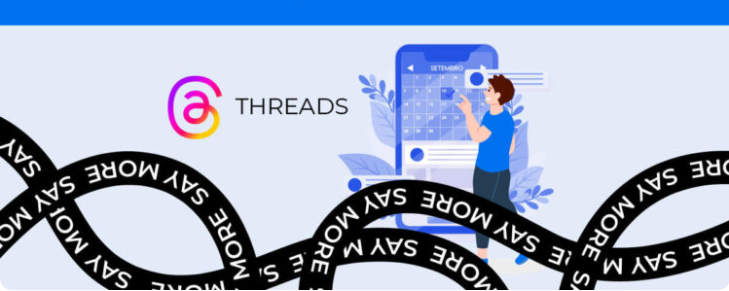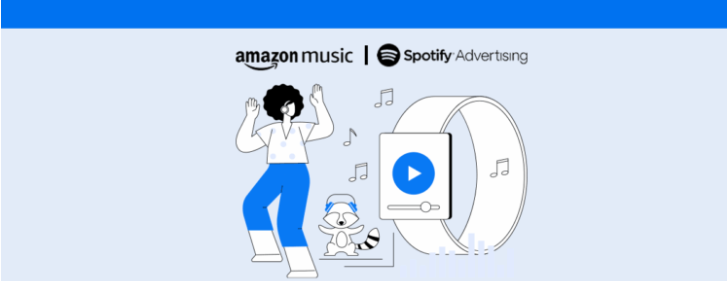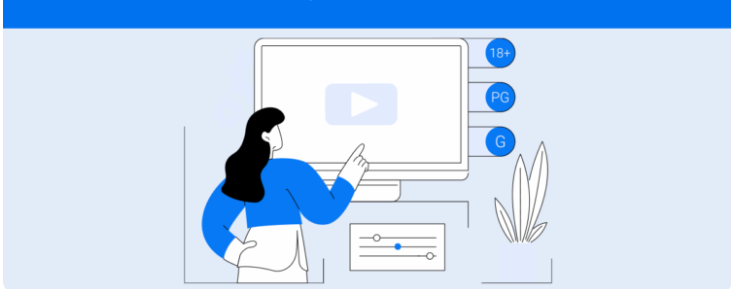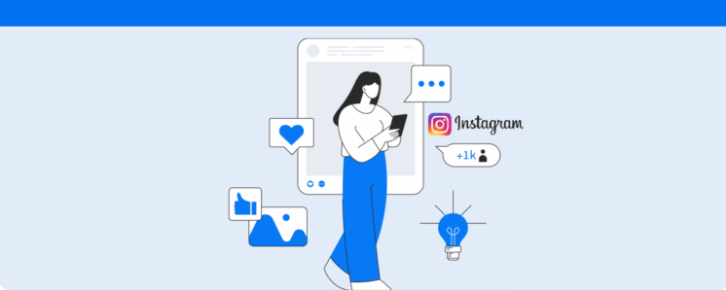Learn how to schedule a post on Threads within the app itself and outside of it, and check out the advantages of adopting a scheduling strategy.
If you are wondering about how to schedule a post on Threads the good news is that there are two practical ways to do this within the app itself using the native feature launched in January 2025 and with external tools that centralize the entire social media operation.
Therefore, in this guide, we will explore these two paths with simple step-by-step instructions, practical tips, and suggestions for measuring results without complication. Stay tuned.
Is there a native scheduling feature on Threads?
Yes. As we mentioned above, Threads now includes a native scheduling feature as of 2025, which makes life easier for those who want to maintain frequency without relying solely on real-time posting.
With this, the significant benefit here is convenience. After all, you create the content, set the date and time, and let the app take care of the rest.
Therefore, for those who are just starting or use few social networks, it is an excellent option to schedule posts.
How to schedule a post on Threads within the app
The process to schedule a post on Threads is streamlined and intuitive, but it is worth checking the step-by-step explanation below to avoid any doubt.
- To start, click to add a new post and create it normally: write the text, include an image or video if available, and review as needed.
- Next, tap on the three dots menu in the top right corner. It will open additional options for the post.
- Select Schedule and set the date and time. Choose carefully, considering your account’s time zone and the best engagement periods for your audience.
- Checked everything? Then confirm the scheduling to finish.
- Finally, the scheduled posts appear in the drafts folder. That is where you can edit, reschedule, or delete if you change your mind before the date.
Additionally, it is important to follow some useful tips to avoid challenges along the way, such as:
- Confirming the time zone set in the app to align with your audience’s actual timezone.
- Treating scheduling as an approval. That is, check mentions, links, and media, as adjusting now saves rework later.
- If you usually publish replies in sequence, organize reminders to follow the main post. This way, your thread remains coherent and rhythmic.
How to schedule a post on Threads with external tools
Although native scheduling solves a lot, when the operation grows, whether in an agency, internal team, or as a multitasking creator, centralizing planning in one place makes a difference.
Especially if the same content or its variations are also published on Instagram, Facebook, LinkedIn, X Twitter and other networks.
That’s where social media management platforms come in. Beyond scheduling posts on Threads, they offer a more integrated view of projects and productivity resources for those who live the daily life of content.
An example of such a platform is Reportei Flux , designed to make scheduling and approvals faster and more visual. With it, you gain:
- Centralization since all your networks are in one place.
- Quick scheduling even across different social networks at the same time, saving hours in the week.
- Intuitive calendar with daily/weekly/monthly views and a drag-and-drop function.
- Batch approvals without noise you can send groups of posts for client/project decision-maker validation, keeping everyone aligned in a single tool.
In other words, it’s a complete tool to assist the social media in every step of the approval and content publication process.
How to schedule a post on Threads with Flux
Just like in Threads itself, scheduling posts with Flux is also very simple. Here’s how it works:
- Firstly, access your account or create one. Then enter Flux and connect the necessary profiles.
- Click on Add new post to start new content.
- Select Threads as the channel and if it makes sense, add other networks. This way, you can publish simultaneously on Instagram, Facebook, X, LinkedIn, and others, always adjusting text and format per network.
- Add images or videos and write the caption. If it’s multichannel, customize nuances, CTA, text size, and mentions for each platform.
- Need client/team validation? Then send the post to an approval group. But if everything is already set, schedule directly.
- Finally, in the Flux calendar, you track what’s approved, scheduled, and published, in a visual and simple way, which is great for spotting gaps and avoiding theme overlap.
Want to know how the tool works in practice? Then try Flux for free for 7 days and compare the organization before and after. You will see that the difference in the team’s pace is clear.
Advantages of scheduling posts
When you take content from improvisation to planning, everything flows better: the routine gains rhythm, quality increases, and the team works more clearly.
Therefore, see the main benefits and how they connect in daily life.
- Creating consistency to publish at the best times, including weekends and holidays, without relying on live posting.
- Gain in focus you prepare topics in blocks and free up time for creation and building relationships with followers.
- Frictionless collaboration centralized approvals reduce rework and prints on WhatsApp.
- Fewer errors with prior review, the risks of switching accounts, deviating from visual identity, or publishing out of context decrease.
- Better use of data scheduling based on historical performance, optimal times/formats increases the chances of success.
Finally, it’s important to highlight that scheduling posts on Threads is not just a productivity trick; it’s the foundation for a mature content operation.
After all, this process facilitates gaining predictability, frees up time to create better, reduces errors, and helps view the strategy as a whole.
Best practices for increasing engagement on Threads
Just like on other social networks, engagement on Threads doesn’t happen by chance.
That’s why below we’ve selected a set of practices that work together from the first hook to the standardization of your tone. Stay tuned.
- Start with a strong hook the first line decides whether the person opens the thread. Therefore, be direct, curious, or useful.
- Engage in conversation, don’t just announce Threads prioritizes dialogue. Therefore, ask questions and come back to respond.
- Vary formats that is, create short posts, lists, mini-tutorials, behind-the-scenes updates, and much more.
- Use media with purpose short images and videos reinforce the message. Therefore, avoid purely decorative media.
- Adapt for each network don’t just copy-paste from Instagram or X. Adjust the tone and structure for each content.
- Test timings even with scheduling, conduct small weekly experiments and compare performance.
- Track native metrics views, likes, reposts, and responses help evolve the agenda, and scheduling becomes part of your continuous improvement cycle.
From a cycle that aims to plan, publish, learn, and optimize, you build engagement consistently and don’t rely on spur-of-the-moment inspiration to deliver value.
Rely on Reportei for your Threads analyses
Finally, it’s worth highlighting that scheduling is only half the journey. Thus, to truly evolve, you need to measure and learn from the results..
To assist in this stage, Reportei offers Threads reports and dashboards that simply and visually show important metrics: views, likes, reposts, responses, profile growth, best-performing posts, and evolution over time.
This way, you identify patterns, stronger times, topics that spark conversation, and formats that retain attention, and you transform data into concrete decisions for the next agenda.
Additionally, if you also publish on other networks, Reportei centralizes marketing indicators in one place, ideal for crossing the impact of Threads with Instagram, LinkedIn, TikTok, Meta Ads, and much more.
Ready to visualize your results clearly? Try Reportei for free and take your insights to the next level.
FAQ: Frequently Asked Questions about scheduling on Threads
Have any doubts about how to schedule a post on Threads? Don’t worry, we’ve prepared the following section to help. Check it out.
They appear in the Drafts folder. There, you can edit, reschedule, or delete before publishing.
Yes, with a multichannel manager like Flux. Still, adapt the text for each network; small changes in tone and CTA make a difference in the result.
Look at views, likes, reposts, responses, and evolution over time. Identify the best-performing times and topics and adjust the calendar.
Scheduling alone doesn’t. What drives the result is the combination of content quality, timing, and consistency. Therefore, use the data to get this trio right.
Create a checklist before scheduling: text, mentions, links, correct media, and if possible, use approval in an external tool to have more people validating.
Start with a realistic cadence, e.g., 3 times a week, and evolve as you gain rhythm. The important thing is to maintain regularity.
Use the history of your posts and Reportei’s reports to discover interaction peaks and adjust the schedule.
Go back to Drafts, edit or reschedule. Having a calendar provides visibility to reorganize content without losing quality.



